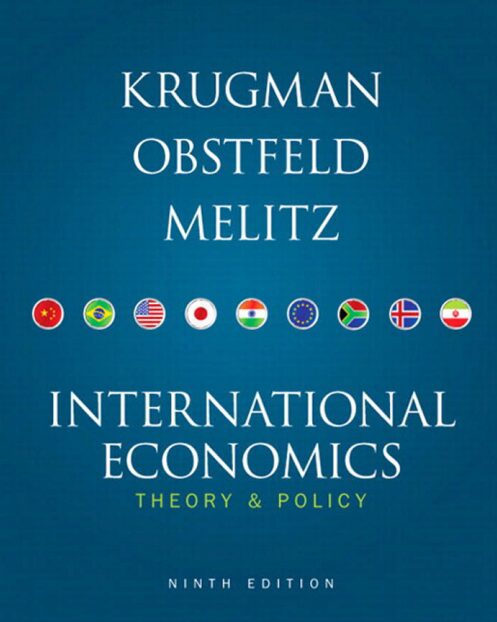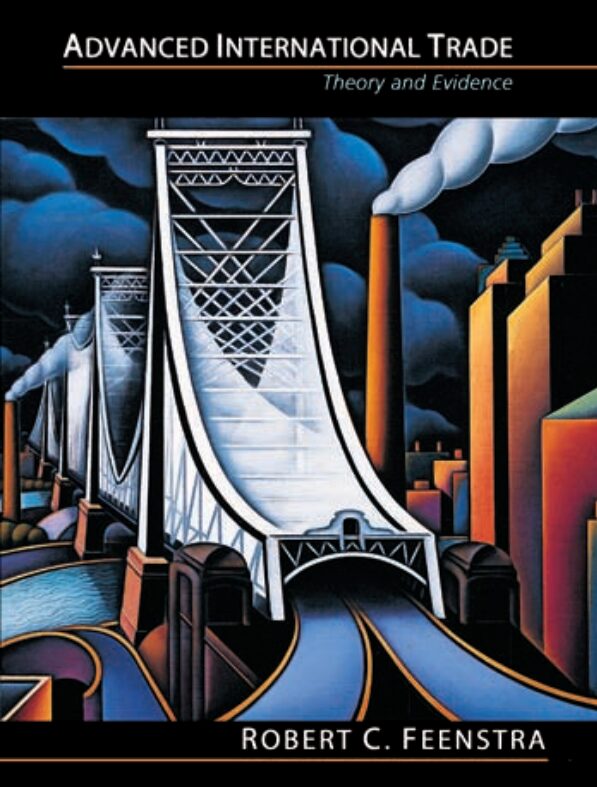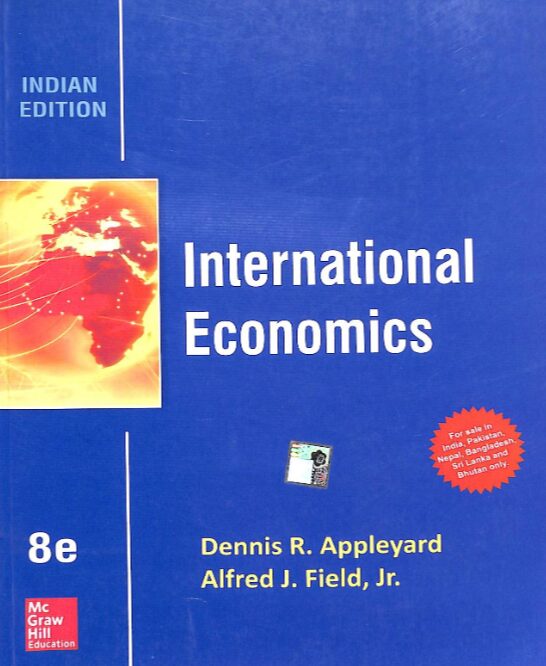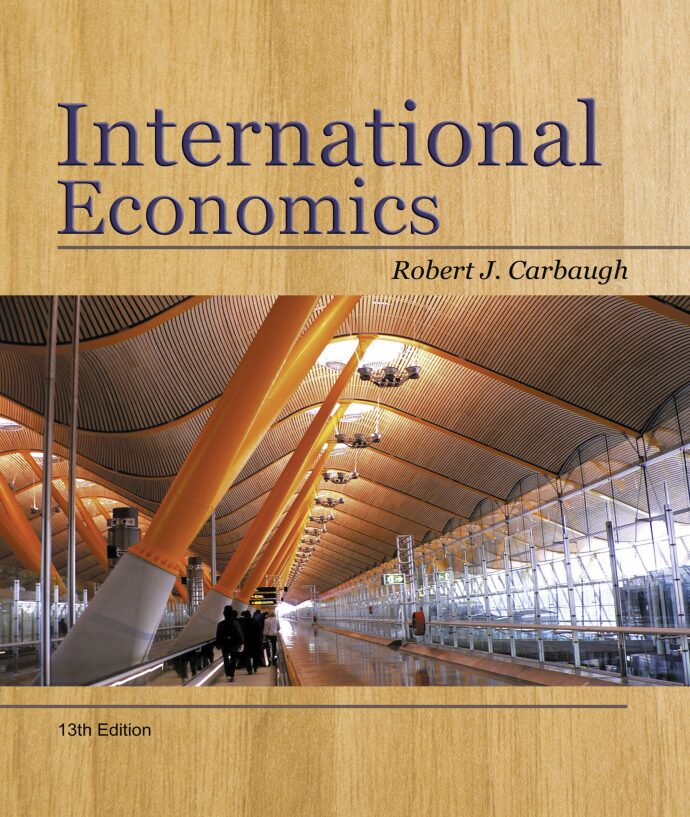and the distribution of digital products.
Top 5 International Trade Books
When two countries are engaged in the exporting and importing of goods and services, it is known as International Trade. Countries engage in trade because they think it will benefit them. They might desire or need the products or services. International trade is made up of a lot of theory, politics, and commercial strategy, even if it may seem relatively straightforward at first.
Top 5 International Trade Books International Economics: Theory and Policy by Krugman, Obstfeld, Melitz
This book incorporates the timeless theoretical and historical ideas that have historically formed the subject’s foundation while covering the most significant contemporary advances in international economics. By emphasizing how current theories have changed from past discoveries in response to a changing global economy, we have managed to accomplish this comprehensiveness.
Trade theory and trade policy are the categories of real trade. Therefore, the topics presented by the unique challenges of economic interaction between sovereign states make up the field of international economics. When studying international economics, there are seven recurring themes that come up: (1) the gains from trade, (2) trade patterns, (3) protectionism, (4) balance of payments, (5) exchange rate determination, (6) international policy coordination, and (7) the international capital market.
Purchase Now Advanced International Trade-Theory and Evidence by Robert C. Feenstra
This book provides a thorough analysis of the empirical data and theoretical underpinnings pertaining to global commerce. It encompasses a range of theories related to international trade, such as modern and classical theories as well as recent developments in this field. It includes advanced topics in classical theories, for instance Ricardian Theory, Heckscher-Ohlin Model, Specific factor model and new trade policies. It consists of various empirical evidence and practical instances to help readers connect the theories with real life. “Advanced International Trade: Theory and Evidence” is well-respected. It is an invaluable tool for practitioners, scholars, and students alike.
Purchase Now World Trade and Payments: An Introduction by R.E.Caves, J.A.Frankel, R.W.Jones
This book includes new theoretical advancements as they have emerged, with a focus on those that appear especially beneficial to students who are trying to comprehend the current issues of the day, whether they are new or old.
In order to demonstrate the benefits of engaging in international trade and some of the drawbacks of doing so in an increasingly globalized trading environment when shocks arise domestically or internationally, Part I presents the “basic model” of trade.
After including information on more recent models that highlight increasing returns and imperfect competition, Part II shifts to the significant competitive trade models. Explaining trade patterns and demonstrating how shifts in prices and technologies impact the distribution of real incomes across and within nations are key points of emphasis. The causes and effects of “outsourcing” and the disintegration of production networks due to returns on scale and significant technological advancements in service-related industries are also covered.
Part III addresses matters related to international trade policy. Public concerns changing hands, governments moving from imposing traditional tariffs to regulating trade through anti-dumping laws, the growth of the European Union, and the consequences of the North American Free Trade Area are all included.
Purchase Now!! International Economics by DR Appleyard and AJ Field Jr.
This book discusses novel issues in the economy worldwide, changes in U.S. trade policy, significant shifts inside the European Union, and the fallout from the recent global financial crisis and recession. The classical concept of trade is presented in the opening themes, along with a discussion of pre-classical mercantilism.
After a thorough analysis of the microeconomic instruments employed in this level of international trade, this can be regarded as a “short course” in intermediate micro, Heckscher-Ohlin trade theory, and basic neoclassical trade theory. It also includes a look at the model’s underlying assumptions. After that, the book emphasized the classic explanation of the production possibilities–indifference curve, the offer curve, which is a crucial component of trade policy, testing the factor endowments approach, and incorporating empirical research on the Heckscher–Ohlin context of the trade income inequality debate. Additionally, assumptions like international factor immobility, homogeneous products, constant returns to scale, and perfect competition are relaxed, characteristics of “real-world” international financial markets, variety of international financial derivative instruments.
The balance-of-payments accounting is introduced in the international monetary material. The analysis of monetary and fiscal policy in a fixed exchange rate environment, macroeconomic policy under various exchange rate regimes, and a study of the foreign exchange market follow. Finally, to conclude, we have a study of the historical evolution of the international monetary system, which includes a glance at reform proposals like target zones and an analysis of some of the ramifications of the global recession of 2007–2009 as well as the current “euro crisis.”
Purchase Now International Economics – Robert J. Carbaugh
International Economics has accomplished its goal of combining a clear and concise treatment of international trade and financial theories with contemporary issues and cases that demonstrate the relevance of theory to real-world problems. Carbaugh presents theoretical discussions in both verbal and graphical terms.
Chapters on the global economy and globalization, the basis of contemporary trade theory, comparative advantage, tariffs, non-tariff trade barriers, trade regulations and industrial policies, trade policies in developing countries, regional trading agreements, international factor movements and multinational corporations, the balance of payments, foreign exchange, determination of the exchange rate, balance-of-payments adjustments, exchange-rate systems and currency crises, macroeconomic policy in an open economy, and international banking reserves are all included in this book.
Purchase Now ConclusionIn the end, studying international trade in literature provides a lot of information and enlightenment about the complexities of world economics. From theoretical frameworks to real-world case studies, the top five international commerce books covered provide readers with a variety of viewpoints. These books are excellent tools for anyone trying to get a foundational understanding or expand on their knowledge, be it a student or an experienced professional.
Through exploring subjects like trade regulations, globalization, and the effects on underdeveloped nations, these books not only educate readers but also push them to consider the intricacies of global commerce critically. So, these books on international trade will inspire and educate you whether your goal is to learn more or just to delve deeper into an intriguing topic.
FAQs Why are theories of international trade essential?By outlining the pitfalls and considerations that should be made when trading, these theories’ study promotes seamless and effective trading. A nation’s financial situation and international reputation may be impacted by an ambiguous or misinformed viewpoint on such a significant issue. For the good of the nation as a whole, it is crucial to comprehend the theories relating to international trade.
Which theory of international trade is the most widely accepted?In recent years, theories of international trade have been increasingly useful in explaining how trade has changed. Each idea has its own significance even though it might not be appropriate for every nation or circumstance. For instance, comparative advantage theory, HO model, specific factor model-all have significant contributions but the most widely used is comparative advantage or ricardian theory. Therefore, it may be concluded that no single hypothesis outperformed the others in terms of popularity.
- Home
- About Us
- Write For Us / Submit Content
- Advertising And Affiliates
- Feeds And Syndication
- Contact Us
- Login
- Privacy
All Rights Reserved. Copyright 2025, Central Coast Communications, Inc.